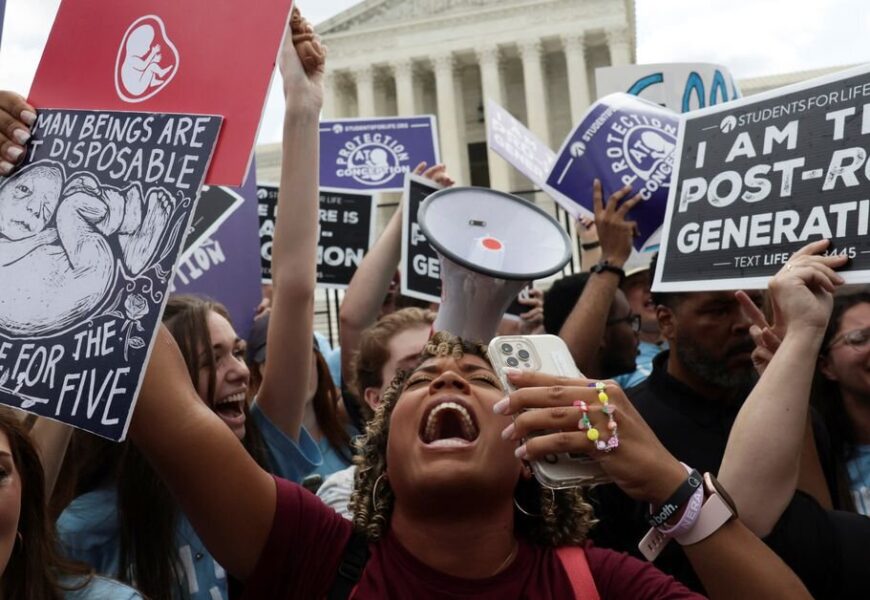Shaping the Law and Society: Landmark Supreme Court Cases That Changed History
KEY TAKEAWAYS:
- Landmark Supreme Court cases shaped American law and society with lasting impacts on constitutional interpretation, civil rights, and the balance of powers.
- Marbury v. Madison established judicial review, empowering the Supreme Court to determine the constitutionality of laws and executive actions.
- Brown v. Board of Education advanced civil rights, leading to desegregation in schools and promoting educational equality.
- Gideon v. Wainwright expanded the right to legal representation, ensuring fairness in the justice system for all individuals.
- Roe v. Wade sparked debates on reproductive rights, resulting in ongoing controversies and developments in abortion laws.
- Citizens United v. FEC influenced campaign finance laws, raising discussions on corporate political spending and personhood.
- McCulloch v. Maryland shaped federalism, interpreting the Necessary and Proper Clause with long-lasting effects on federal and state authority.
- Obergefell v. Hodges recognized same-sex marriage rights, advancing LGBTQ+ rights and reflecting evolving attitudes toward equality.
- The Supreme Court plays a critical role in safeguarding the Constitution and preserving fundamental principles.
- These landmark decisions inspire public policy, social discourse, and a pursuit of justice, liberty, and equality for future generations.
The realm of American jurisprudence has been profoundly shaped by a series of landmark Supreme Court cases, each leaving an indelible mark on the nation’s legal landscape. These influential decisions, handed down by the highest court in the land, have often been pivotal in defining constitutional principles, advancing civil rights, and altering the course of American history. This article embarks on a journey to delve into these consequential legal rulings, analyzing the far-reaching implications they have had on the evolution of law and society. From the establishment of judicial review to the recognition of fundamental rights, these landmark Supreme Court cases have set enduring precedents that continue to resonate today, shaping the very fabric of the nation’s legal system.
It is important to gain insights into the reasoning behind these momentous judgments and their profound effects on American society. From the seminal Marbury v. Madison case that cemented the principle of judicial review to the groundbreaking Brown v. Board of Education decision that dismantled segregation in schools, each featured case has left an indelible legacy on the pursuit of justice and equality. Furthermore, the contentious and complex cases will be discussed, such as Citizens United v. FEC, which sparked debates over campaign finance laws and the role of corporations in politics.
Navigating through these landmark Supreme Court cases, it becomes evident that they are not merely historical artifacts but living pillars of American democracy. Understanding their legal implications and societal impact, readers will gain a deeper appreciation for the role of the Supreme Court in shaping the nation’s legal principles and safeguarding individual rights.
Marbury v. Madison (1803): The Balance of Power

In the annals of American jurisprudence, few cases loom as large as Marbury v. Madison. Decided by the Supreme Court in 1803, this landmark case not only resolved a politically charged dispute but also established a fundamental principle that would forever alter the balance of power in the United States government. At its core, Marbury v. Madison centered around the appointment of federal judges during the final days of President John Adams’ administration.
In the aftermath of the 1800 presidential election, outgoing President Adams sought to appoint several Federalist Party members to federal judgeships. One of these appointees was William Marbury, who was to serve as a justice of the peace in the District of Columbia. However, due to a series of political and administrative missteps, Marbury’s commission was not delivered before the new administration took office under President Thomas Jefferson.
In a remarkable turn of events, Marbury petitioned the Supreme Court, seeking a writ of mandamus to compel the new Secretary of State, James Madison, to deliver his commission. Chief Justice John Marshall, a staunch Federalist, presided over the case and faced a delicate predicament. If the Court ordered the delivery of Marbury’s commission, it risked igniting a direct confrontation with the Jefferson administration, which was fervently opposed to the Federalist judiciary.
In a masterful display of legal reasoning and pragmatism, Chief Justice Marshall reached a momentous conclusion. He asserted that Marbury indeed had a right to his commission under the law, but the Supreme Court did not possess the authority to issue the writ he sought. This momentous assertion established the doctrine of judicial review—the power of the Court to interpret the Constitution and review the constitutionality of legislative and executive actions.
The establishment of judicial review through Marbury v. Madison profoundly altered the balance of power among the three branches of government. With this landmark decision, the Supreme Court asserted its authority as the final arbiter of the Constitution’s meaning and effectively checked the powers of both the executive and legislative branches.
By allowing the Court to strike down laws that it deemed unconstitutional, the ruling ensured that no branch of government could overstep its constitutional boundaries with impunity. This judicial safeguard has since become a bedrock principle in American constitutional law, providing a vital mechanism for maintaining the separation of powers and protecting individual rights.
Marbury v. Madison’s legacy is immeasurable and enduring. The case not only fortified the authority of the judiciary but also established the concept that the Constitution is the supreme law of the land, guiding the nation’s governance and shaping the course of American democracy. The ruling set a precedent that has been cited and relied upon countless times in subsequent Supreme Court decisions.
More than two centuries later, the principle of judicial review continues to shape the American legal landscape, enabling the judiciary to act as a check against potential abuses of power by the other branches of government. The case remains a testament to the power of the Supreme Court to interpret the Constitution and its vital role in safeguarding the rule of law in the United States. As a result, Marbury v. Madison endures as one of the most significant and influential cases in American legal history.
Brown v. Board of Education (1954): Racial Equality and Justice
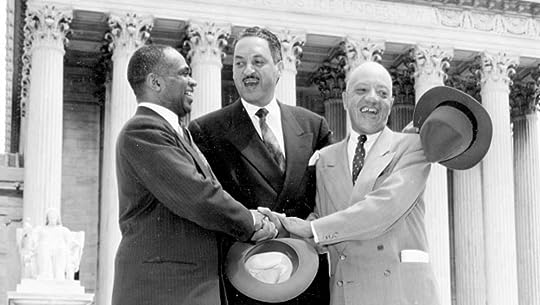
In the annals of civil rights history, few cases carry the weight and significance of Brown v. Board of Education. Decided by the United States Supreme Court in 1954, this landmark case marked a pivotal moment in the struggle for racial equality and justice in America. At its core, Brown v. Board of Education sought to challenge the constitutionality of racial segregation in public schools.
The case emerged from a series of lawsuits filed on behalf of African American children who were denied admission to white public schools due to the policy of segregation. The plaintiffs argued that this “separate but equal” doctrine, established by the infamous Plessy v. Ferguson case in 1896, violated their rights under the Equal Protection Clause of the Fourteenth Amendment to the United States Constitution.
In a unanimous decision, Chief Justice Earl Warren and the Supreme Court boldly proclaimed that segregation in public education had no place in a democratic society. They asserted that racial segregation inherently created feelings of inferiority among African American students and violated the principle of equal protection under the law. The Court famously declared that “separate educational facilities are inherently unequal,” a sentiment that would resonate for generations to come.
Advancing Civil Rights and Equality
Brown v. Board of Education was a turning point in the civil rights movement, sparking a seismic shift towards racial desegregation and equality in America. The decision set in motion a comprehensive effort to dismantle segregation in public schools, a movement known as the desegregation of schools. This landmark ruling not only opened the doors of previously segregated schools to African American students but also laid the foundation for broader civil rights advancements.
The decision in Brown v. Board of Education provided momentum and legal precedent for subsequent civil rights legislation and legal battles aimed at ending segregation in other spheres of public life. The case also served as an inspiration and rallying cry for activists and advocates committed to combating racial discrimination and injustice. The ruling’s impact reverberated far beyond the realm of education, eventually leading to significant strides in the pursuit of civil rights and equality for all Americans.
Continuing Challenges and Progress
Despite the monumental strides achieved through Brown v. Board of Education, the journey towards racial equality in education and beyond has not been without its challenges. Following the decision, many school districts resisted desegregation, leading to further legal battles and resistance to change. Even today, issues of educational equity and disparities persist, underscoring the ongoing need for continued vigilance and advocacy to ensure that the promise of Brown v. Board of Education is fully realized.
However, the legacy of Brown v. Board of Education endures as a testament to the power of the judiciary to effect transformative change and uphold the principles of equality and justice. The case continues to serve as a guiding beacon in the ongoing quest for civil rights and racial equality, inspiring future generations to stand up for justice and fairness. As the nation grapples with issues of racial justice and equality, Brown v. Board of Education remains a seminal reminder of the enduring power of the law to shape a more just and inclusive society.
Roe v. Wade (1973): Legalization of Abortion
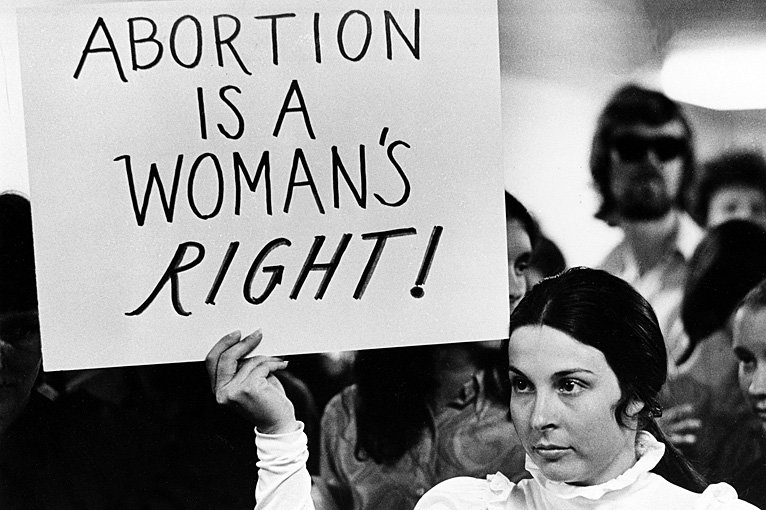
Another landmark Supreme Court case that has ignited as much debate and controversy is Roe v. Wade. Decided by the United States Supreme Court in 1973, this historic case fundamentally altered the landscape of reproductive rights and abortion access in the United States. With its far-reaching implications, Roe v. Wade has remained a focal point in the ongoing debate surrounding reproductive rights and individual liberties.
Legalizing Abortion Rights
Roe v. Wade emerged from a legal challenge to a Texas statute that criminalized abortion except to save the life of the mother. The case centered on the right to privacy and whether it extended to a woman’s decision to have an abortion. The Supreme Court’s decision, authored by Justice Harry Blackmun, held that a woman’s right to choose to have an abortion fell within the ambit of her fundamental right to privacy, which is protected under the Due Process Clause of the Fourteenth Amendment.
The Court’s ruling effectively legalized abortion nationwide and established a framework for regulating abortion during different stages of pregnancy. It recognized a woman’s right to choose abortion in the first trimester, while allowing states to regulate and restrict abortion to protect the woman’s health in the second trimester. In the third trimester, when the fetus reaches viability, the state has an interest in protecting both the woman’s health and the potential life of the fetus, permitting regulations to restrict abortion, except when necessary to preserve the life or health of the mother.
Impact on Reproductive Rights Debate
Roe v. Wade’s landmark decision sparked a deeply polarized and ongoing national debate over reproductive rights, privacy, and the role of government in personal decisions. Advocates of reproductive rights hailed the ruling as a groundbreaking victory for women’s autonomy and control over their bodies. They argued that legal access to abortion is essential for women’s reproductive health, equality, and socioeconomic advancement.
Conversely, opponents of the decision, often referred to as pro-life advocates, vigorously oppose abortion and contend that Roe v. Wade infringes upon the rights of unborn children. They have sought to overturn or restrict the decision through legal challenges and legislative efforts at both the state and federal levels.
Controversies and Modern Developments
In the decades following Roe v. Wade, the decision has faced numerous legal challenges and controversies. State legislatures have passed a variety of restrictive abortion laws, testing the boundaries of the ruling and leading to numerous legal battles. The issue has been revisited in subsequent Supreme Court cases, including Planned Parenthood v. Casey in 1992, where the Court reaffirmed the essential holding of Roe v. Wade while allowing states to impose certain restrictions.
In recent years, Roe v. Wade has again been a subject of heated debate, particularly with shifts in the composition of the Supreme Court and the potential for future rulings to modify or overturn the precedent. As state legislatures continue to enact abortion-related laws and legal challenges make their way through the courts, the legacy and impact of Roe v. Wade continue to be felt throughout the nation. The case remains a pivotal touchstone in the ongoing national dialogue about reproductive rights, individual freedoms, and the role of the judiciary in shaping societal norms and policies.
Miranda v. Arizona (1966): Protection for Individual Rights

Among the landmark Supreme Court cases that have significantly impacted the criminal justice system, Miranda v. Arizona stands as a powerful pillar of protection for individual rights. The case’s ruling, issued by the United States Supreme Court in 1966, enshrined the now-famous Miranda warnings, which serve to safeguard an individual’s right to remain silent and avoid self-incrimination during police interrogations. This seminal decision has not only become a staple in popular culture but also plays a critical role in ensuring due process and fair trials for those accused of crimes.
The Right to Remain Silent
Miranda v. Arizona emerged from a consolidated case involving four different defendants, each of whom had confessed to crimes during police interrogations. The central issue was whether the confessions obtained were voluntary and, thus, admissible in court. The Supreme Court’s landmark ruling, authored by Chief Justice Earl Warren, held that the Fifth Amendment right against self-incrimination protects individuals from being compelled to be witnesses against themselves.
The Court established the “Miranda warnings,” which are now familiar to many through TV shows and movies. The warnings inform individuals of their rights, including the right to remain silent and the right to an attorney. Law enforcement officers must provide these warnings before conducting custodial interrogations to ensure that individuals are fully aware of their constitutional rights and can make informed decisions regarding their cooperation with the authorities.
Ensuring Due Process and Fair Trials
Miranda v. Arizona is deeply connected to the concept of due process, a fundamental tenet of the United States legal system. By requiring police to issue Miranda warnings before interrogating suspects in custody, the Court sought to prevent the use of coerced confessions and protect individuals from self-incrimination in a manner that could jeopardize the fairness of criminal trials.
The decision has played a pivotal role in reinforcing the idea that any evidence obtained in violation of a defendant’s constitutional rights, including the right to remain silent, may be deemed inadmissible in court. This judicial protection ensures that criminal defendants are afforded a fair trial, with evidence and confessions obtained through lawful and ethical means.
Influencing Law Enforcement Practices
In the aftermath of Miranda v. Arizona, law enforcement agencies across the United States adapted their practices to comply with the Court’s ruling. Police departments developed standardized protocols for issuing Miranda warnings during interrogations to adhere to the requirements of the decision. The case has also influenced the training of law enforcement officers, emphasizing the importance of respecting suspects’ constitutional rights.
While Miranda v. Arizona has been hailed for its role in enhancing the rights of criminal suspects, it has also faced criticism from those who argue that it may hinder law enforcement in obtaining crucial information during investigations. Nevertheless, the case remains a critical cornerstone of the criminal justice system, ensuring that suspects are treated fairly and that their constitutional rights are protected throughout the interrogation process.
Obergefell v. Hodges (2015): LGBTQ+ Rights and Marriage Equality

Obergefell v. Hodges stands as a landmark Supreme Court case that marks a transformative moment in the fight for LGBTQ+ rights and marriage equality in the United States. In June 2015, the Supreme Court delivered a historic ruling, legalizing same-sex marriage across all states. The decision was met with celebration from the LGBTQ+ community and advocates who had long fought for equal recognition of their relationships. Obergefell v. Hodges not only recognized same-sex marriage rights but also propelled the LGBTQ+ rights movement forward, reflecting the evolving attitudes and changing legal landscape surrounding issues of marriage and equality.
Recognizing Same-Sex Marriage Rights
At the heart of Obergefell v. Hodges were several same-sex couples who had been denied the right to marry or have their marriages recognized in their respective states. In a groundbreaking decision, the Supreme Court held that the fundamental right to marry is guaranteed to all couples, regardless of their sexual orientation, under the Due Process Clause and the Equal Protection Clause of the Fourteenth Amendment.
The ruling meant that same-sex couples across the country could no longer be denied the right to marry or have their marriages treated differently from opposite-sex unions. Obergefell v. Hodges effectively legalized same-sex marriage nationwide, ending the patchwork of state laws that had previously allowed some states to recognize such marriages while others did not.
Advancing LGBTQ+ Rights Movement
Obergefell v. Hodges represented a significant milestone for the LGBTQ+ rights movement, culminating years of activism and legal battles. The ruling was a powerful symbol of progress and equality, giving same-sex couples the same legal rights and protections as their heterosexual counterparts. It marked a seismic shift in public perception and acceptance of LGBTQ+ individuals and relationships.
The case also served as a catalyst for further advancements in LGBTQ+ rights. It emboldened activists to push for more comprehensive nondiscrimination laws, workplace protections, and other civil rights for the LGBTQ+ community. Obergefell v. Hodges became a rallying cry for advocates, inspiring them to continue fighting for full equality and challenging discriminatory practices wherever they persisted.
Evolving Attitudes and Legal Landscape
Obergefell v. Hodges reflected the changing attitudes and evolving legal landscape regarding LGBTQ+ rights and equality in the United States. It demonstrated a significant shift in societal acceptance and recognition of same-sex relationships as a legitimate and valued form of partnership.
Following the ruling, polls indicated a notable increase in public support for same-sex marriage, highlighting the transformative power of landmark Supreme Court decisions in shaping public opinion. Additionally, the case served as a pivotal moment in the ongoing debate over individual rights versus states’ rights, underscoring the federal government’s role in ensuring equal protection under the law.
Thus, Obergefell v. Hodges holds a place of profound importance in the fight for LGBTQ+ rights and marriage equality in the United States. By recognizing same-sex marriage rights, advancing the LGBTQ+ rights movement, and reflecting evolving attitudes and legal perspectives, the case left an indelible mark on American history. Obergefell v. Hodges stands as a testament to the power of the courts in safeguarding civil rights and shaping a more inclusive and equal society.
Citizens United v. FEC (2010): Corporate Personhood

Citizens United v. Federal Election Commission (FEC) is a landmark Supreme Court case that sparked contentious debates over the intersection of money, politics, and free speech. In January 2010, the Supreme Court issued its ruling, which had far-reaching implications for campaign finance laws and the role of corporations in the electoral process. The case centered on the rights of corporations and other entities to engage in political spending and led to the concept of “corporate personhood,” stirring heated discussions about the influence of money on democracy.
Corporations and Political Spending
At the core of Citizens United v. FEC was the question of whether corporations and labor unions should be allowed to spend unlimited amounts of money on political campaigns. The Supreme Court’s decision held that restricting such spending would violate the First Amendment’s protection of free speech. As a result, corporations, unions, and other organizations gained the ability to pour significant financial resources into political advertisements and advocacy efforts.
The ruling essentially equated corporate spending with free speech, allowing these entities to have a more significant impact on elections and public discourse. This newfound ability to influence the political landscape raised concerns about the potential for undue corporate influence on elected officials and policy decisions.
Influence on Campaign Finance Laws
Citizens United v. FEC dramatically altered the landscape of campaign finance laws in the United States. The decision led to the proliferation of Super PACs (Political Action Committees), which can raise and spend unlimited amounts of money to support or oppose political candidates independently of their campaigns. It also weakened existing regulations aimed at curbing the influence of money in politics, such as limits on corporate and union contributions to political candidates.
The ruling’s impact was further compounded by subsequent court decisions and legislative changes, contributing to the rise of “dark money” in politics – undisclosed contributions from organizations that engage in political spending. The influx of untraceable money in the political arena raised concerns about transparency and accountability in the electoral process.
Debate Over Corporate Personhood
Another critical aspect of Citizens United v. FEC was the concept of corporate personhood – the notion that corporations, like individuals, possess certain rights under the Constitution. The decision expanded the notion of corporate personhood, leading to debates about the appropriate extent of constitutional rights granted to corporations.
Critics argue that granting corporations the same rights as individuals can distort the democratic process, as these entities are driven by profit motives rather than the common good. Supporters, on the other hand, contend that corporations should enjoy free speech protections to express their political views and participate in the democratic process.
With this being said, Citizens United v. FEC remains one of the most controversial Supreme Court decisions in recent history. By granting corporations and other entities the ability to engage in unlimited political spending, the case transformed the landscape of campaign finance and opened the door to significant corporate influence in politics. The ruling’s impact continues to shape debates over the role of money in elections and the extent of constitutional rights granted to corporate entities.
Plessy v. Ferguson (1896) and Brown v. Board of Education (1954): A Comparison of Legal Decisions Impacting Racial Equality
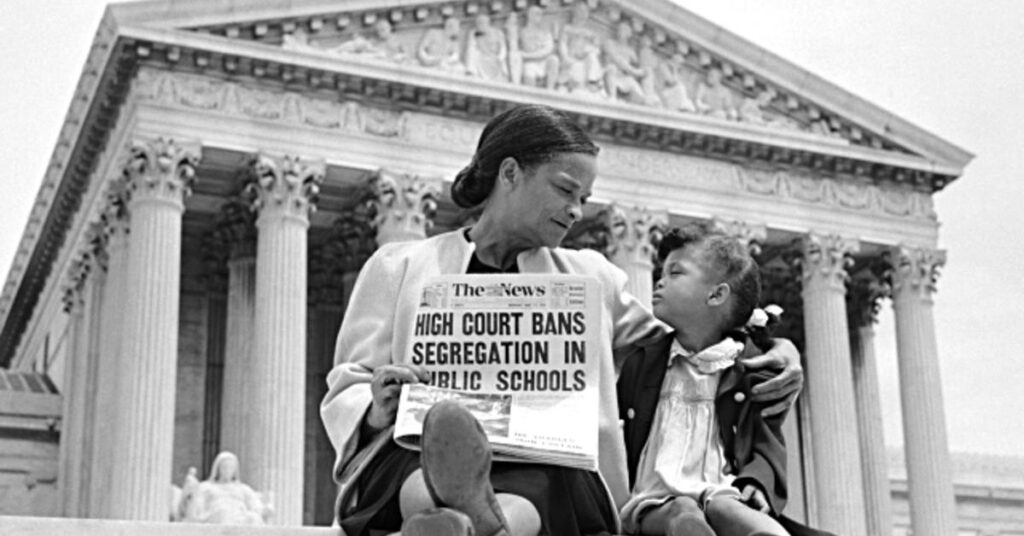
Plessy v. Ferguson (1896) and Brown v. Board of Education (1954) are two landmark Supreme Court cases that left a profound impact on the history of civil rights in the United States. Both cases dealt with issues of segregation and desegregation in schools, but their outcomes and implications were vastly different. The comparison between Plessy v. Ferguson and Brown v. The Board of Education underscores the stark contrast in their impact on civil rights and social change. These landmark Supreme Court cases serve as critical milestones in the ongoing journey toward equality and justice for all in the United States.
Segregation and Desegregation in Schools
Plessy v. Ferguson centered on the constitutionality of “separate but equal” facilities for different racial groups. In 1892, Homer Plessy, an African American, challenged Louisiana’s Separate Car Act, which required separate railway carriages for white and Black passengers. The Supreme Court’s decision upheld the state’s segregation laws, ruling that as long as facilities were equal, racial segregation was constitutional.
In contrast, Brown v. Board of Education marked a turning point in the fight against racial segregation in schools. The case involved multiple lawsuits from African American families seeking to desegregate public schools. In a unanimous decision, the Supreme Court declared that state laws mandating separate public schools for Black and white students were inherently unequal and violated the Fourteenth Amendment’s Equal Protection Clause. This historic ruling paved the way for the desegregation of schools and other public facilities, challenging the legitimacy of racial segregation laws.
Significance of Overturning Plessy
One of the critical differences between Plessy v. Ferguson and Brown v. Board of Education lies in their impact on the legal framework of racial segregation. Plessy established the “separate but equal” doctrine, which allowed for widespread segregation across various aspects of American society, perpetuating racial discrimination for decades.
However, with Brown v. Board of Education, the Supreme Court explicitly overruled Plessy and repudiated the idea that separate facilities could ever be truly equal. This landmark decision marked a critical step forward in the fight against racial segregation, setting the stage for desegregation efforts and challenging the status quo of racial inequality.
Impact on Civil Rights and Social Change
The legacy of Brown v. Board of Education extends beyond the realm of education. It catalyzed the Civil Rights Movement, inspiring activism and advocacy for equal rights and racial justice. The ruling not only influenced desegregation efforts in schools but also laid the groundwork for dismantling other racially discriminatory laws and practices.
On the other hand, Plessy v. Ferguson remained a symbol of racial injustice and the struggle for civil rights. It underscored the need for further legal challenges and social activism to combat racial segregation and discrimination.
IX. McCulloch v. Maryland (1819): Examining the Balance of Federal Powers and State Authority
McCulloch v. Maryland (1819) is a seminal Supreme Court case that profoundly influenced the balance of power between the federal government and individual states in the United States. This landmark decision addressed critical issues concerning federal authority, the interpretation of the Necessary and Proper Clause, and the broader concept of federalism. It not only shaped the relationship between the federal government and the states but also defined the parameters of federal authority and the scope of the Necessary and Proper Clause. As a key moment in the evolution of federalism, this Supreme Court decision continues to influence discussions about the division of powers and the interplay between federal and state authority in the United States.
Federal Powers and State Authority
At the heart of McCulloch v. Maryland was the question of whether the federal government possessed the constitutional authority to establish a national bank and whether a state had the power to tax such a federally chartered institution. The case emerged when the state of Maryland attempted to impose a tax on the Second Bank of the United States, a federally chartered bank.
In its ruling, the Supreme Court affirmed the existence of implied powers for the federal government to carry out its enumerated responsibilities. Chief Justice John Marshall’s majority opinion argued that the federal government’s creation of the national bank fell within its express powers, including the authority to collect taxes, borrow money, and regulate commerce. Moreover, the Court emphasized that the states’ powers were limited and could not impede or obstruct valid exercises of federal authority.
Interpretation of the Necessary and Proper Clause
An essential element of McCulloch v. Maryland was the Court’s interpretation of the Necessary and Proper Clause, also known as the Elastic Clause or the Implied Powers Clause. This clause, found in Article I, Section 8 of the Constitution, grants Congress the authority to make all laws necessary and proper for executing its enumerated powers.
The Court’s interpretation of this clause broadened the scope of federal authority, allowing Congress to adopt measures that were reasonably related to carrying out its enumerated powers. Chief Justice Marshall asserted that the Necessary and Proper Clause was not limited to explicit grants of power but extended to any means not prohibited by the Constitution that were appropriate and adapted to achieving constitutional ends.
Enduring Effects on Federalism
McCulloch v. Maryland significantly strengthened the supremacy of the federal government and reinforced the principle of federalism—the distribution of powers between the national and state governments. By establishing the supremacy of federal laws over state laws in matters within the scope of federal authority, the decision solidified the notion that the federal government was supreme in its sphere of influence.
Furthermore, the ruling solidified the principle that state governments cannot impair or obstruct the legitimate exercise of federal powers. It established a precedent for interpreting the Necessary and Proper Clause in a manner that expanded the scope of federal authority while still respecting the bounds set by the Constitution.
Gideon v. Wainwright (1963): Championing the Right to Legal Representation
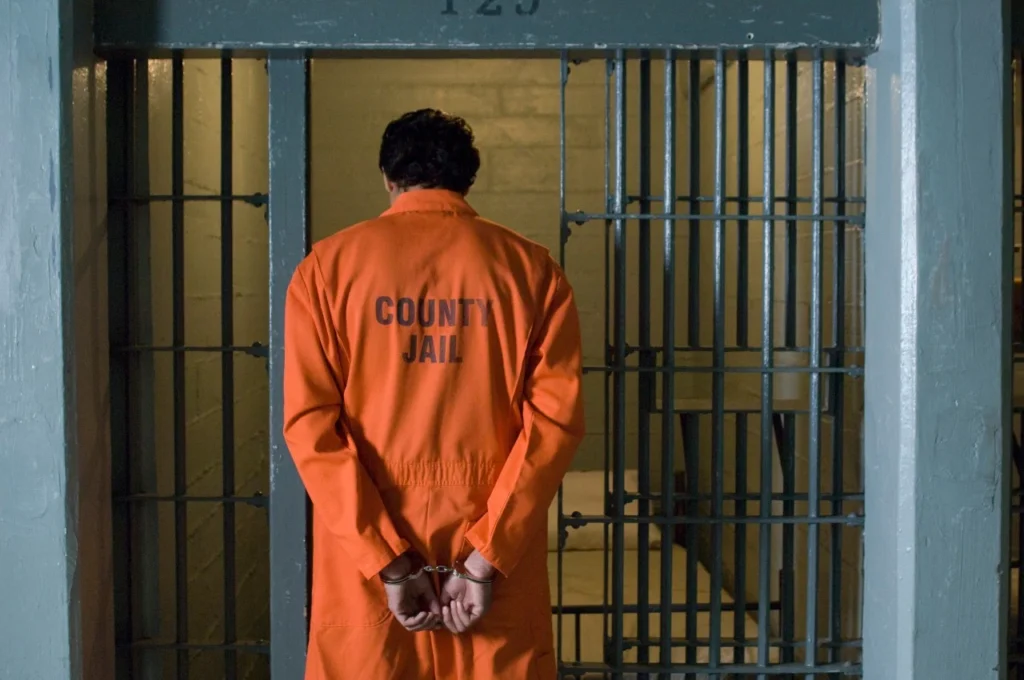
Gideon v. Wainwright (1963) stands as a pivotal moment in the realm of criminal justice, significantly impacting the right to legal representation in the United States. This landmark Supreme Court case dealt with the fundamental question of whether the Sixth Amendment guarantees the right to counsel in all criminal cases, including those involving indigent defendants. In this article, we delve into the critical aspects of Gideon v. Wainwright, its impact on the expansion of access to legal counsel, and its enduring legacy in ensuring fairness within the American justice system.
Right to Legal Representation
At the core of Gideon v. Wainwright was the question of an accused individual’s right to legal representation. The case originated when Clarence Earl Gideon, a Florida resident charged with felony breaking and entering, could not afford an attorney and was denied a court-appointed lawyer due to state law. Representing himself in the trial, Gideon was convicted and sentenced to imprisonment.
The Supreme Court’s unanimous decision, authored by Justice Hugo Black, established that the right to counsel was a fundamental constitutional right. The Court ruled that this right extended to all criminal defendants, regardless of their financial means, as part of the Sixth Amendment’s guarantee of assistance of counsel for the accused. The landmark ruling fundamentally changed the landscape of criminal defense, ensuring that every defendant facing serious criminal charges had the right to legal representation.
Expanding Access to Counsel
Gideon v. Wainwright significantly expanded access to legal counsel for indigent defendants across the nation. In the aftermath of the decision, states were required to provide court-appointed counsel for individuals who could not afford private representation in felony cases. This landmark ruling effectively leveled the playing field for those who lacked financial resources to hire an attorney, ensuring that their right to a fair trial was upheld.
Moreover, the case’s impact extended beyond criminal trials, as subsequent Supreme Court decisions and interpretations further extended the right to counsel to misdemeanor cases and other critical stages of the legal process, such as post-conviction proceedings.
Ensuring Fairness in the Justice System
Gideon v. Wainwright played a pivotal role in promoting fairness and due process within the American justice system. By securing the right to legal representation for all individuals accused of crimes, the decision reinforced the principle that every defendant should have access to a competent attorney capable of providing a vigorous defense.
The case’s legacy is evident in the thousands of cases where individuals who could have been wrongfully convicted without adequate representation have received a fair trial, access to vital evidence, and an effective defense. Gideon v. Wainwright’s impact on the justice system endures, continuing to shape discussions on the importance of preserving and protecting the right to counsel, particularly for those without financial means.
In conclusion, the journey through the landmark Supreme Court cases has been a riveting exploration of pivotal legal decisions that have indelibly shaped the course of American law and society. Each case brought before the nation’s highest court held the potential to set profound precedents and alter the course of history. The analysis of these landmark cases underscores the significance of the Supreme Court’s role in safeguarding the Constitution’s integrity and preserving the nation’s fundamental principles. As the highest authority on constitutional interpretation, the Supreme Court’s rulings have resonated beyond the courtroom, shaping the course of public policy and social discourse. Through the lens of these landmark cases, readers gain an appreciation for the evolving nature of law, which adapts to meet the changing needs and values of society. These legal decisions serve as guiding lights, reminding us of the enduring importance of upholding individual rights, promoting justice, and preserving the nation’s democratic principles. Their legacies continue to reverberate, inspiring future generations to pursue justice, equality, and liberty for all. As the Supreme Court continues to adjudicate the most pressing issues of our time, the enduring significance of these influential legal decisions will continue to guide the nation toward a more just and equitable future.

